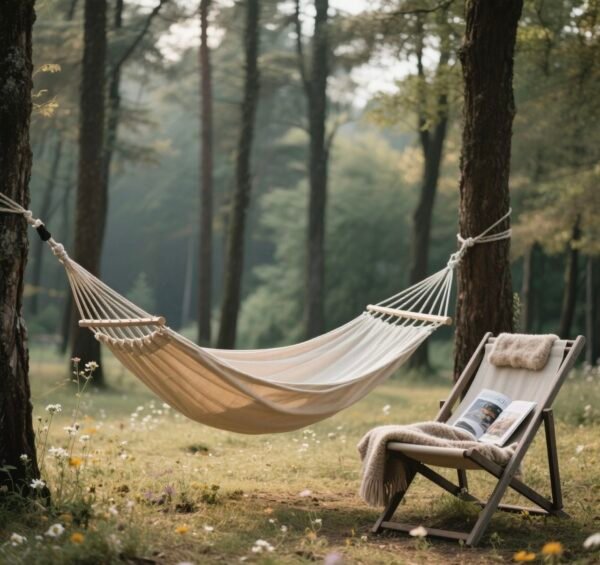Introduction
Outdoor leisure products – from garden chairs to portable coolers and playground equipment – are engineered for durability under sun, rain, and frequent human use. However, exposure to natural environments also introduces persistent microbial challenges, including:
- Bacterial colonization from soil and water
- Fungal and mold growth in humid or shaded areas
- Odor development due to microbial degradation of polymers or fabrics
The integration of inorganic antimicrobial agents into these products is emerging as a crucial strategy for manufacturers seeking to align durability, hygiene, and consumer expectations.
Market Drivers for Antimicrobial Outdoor Products
✅ Post-Pandemic Hygiene Awareness
Consumers demand products offering added protection against invisible microbial threats.
✅ Material Longevity Concerns
Microbial degradation accelerates wear, discol
✅ Brand Differentiation
Antimicrobial-enhanced products stand out in competitive outdoor and leisure markets.
Microbial Risks in Outdoor Leisure Items
| Product Type | Primary Risk |
|---|---|
| Playground equipment | Bacterial and fungal growth on plastic surfaces |
| Garden furniture | Mold and mildew in hu |
| Coolers and food storage | Bacterial contamination leading to odors |
| Inflatable pools | Algae, bacteria, and mold proliferation |
| Hammocks and loungers | Fungal growth on fabric in shaded areas |
Antimicrobial Agents for Outdoor Applications
Silver-Based Agents
- Mode: Disrupts bacterial membranes and replication processes.
- Applications: Playground handles, cooler interiors, pool accessories.
- Advantages: High antimicrobial efficacy, minimal impact on material appearance.
Copper-Based Agents
- Mode: Generates oxidative damage to microbial cells, effective against bacteria, fungi, and algae.
- Applications: Garden furniture frames, outdoor shower fixtures, marine leisure products.
- Advantages: Excellent antifungal and algicidal properties, supporting broader outdoor uses.
Zinc-Based Agents
- Mode: Inhibits microbial enzymatic systems and growth cycles
- Applications: PVC inflatable pools, hammock fibers, woven chair fabrics.
- Advantages: Mild broad-spectrum antimicrobial protection, cost-effective for mass production.
Manufacturing Integration Process
- Masterbatch Development
Antimicrobial agents are compounded into polymer masterbatches compatible with HDPE, PP, PVC, - Processing Techniques
Depending on the final product, integration occurs via extrusion, injection molding, coating, or fiber spin - Performance Testing and Certification
Products undergo ISO 22196 or ASTM G21 testing to confirm bacterial and fungal resistance performance under simulated environmental condition
Performance Insights
Field assessments demonstrate:
- Copper-infused garden furniture resists mold growth even after continuous outdoor exposure through rainy seasons.
- Silver-enhanced cooler interiors maintain >99% bacterial reduction within 24 hours, reducing odors from organic residues.
- Zinc-based treated inflatable pools show significant resistance to algae formation compared to untreated PVC mod
Design and Aesthetic Considerations
- Color Stability: Silver and zinc maintain neutral aesthetics, while copper can impart slight metallic tones, which may complement rustic or industrial ou
- Surface Texture Impact: Proper formulation ensures antimicrobial additives do not affect tactile comfort or material flexibility, crucial
Economic and Strategic Implications
Cost Factors
Antimicrobial integration increases production costs by 10–20%, varying by agent type, concentration, and manufacturing proces
Return on Investment
Brands achieve ROI through:
- Premium product positioning
- Reduced warranty claims related to microbial degradation
- Enhanced consumer trust and repeat purchases
Regulatory Compliance
All antimicrobial additives must meet regional and international standards for:
- Consumer product safety (REACH, EPA)
- Skin contact suitability, especially for leisure items with prolonged human contact
- Environmental impact, ensuring no harmful leaching into natural ecosystems
Emerging Trends in Antimicrobial Outdoor Products
- Eco-Friendly Antimicrobial Solutions
Combining protection with biodegradable or recycled materials to support sustainability commit - Smart Antimicrobial Coatings
Coatings that activate under moisture or temperature triggers for targeted protection and prolonged agent life. - Transparent Certification Labels
Clear antimicrobial efficacy labels increase consumer confidence at point of sale.
Conclusion
The integration of antimicrobial agents into outdoor leisure products is no longer merely an innovation but a strategic necessity for brands aiming to address evolving consumer priorities around hygiene, durability, and environmental stewardship.
Incorporating silver, copper, or zinc-based solutions ensures products remain fresh, safe, and reliable even under the challenging conditions nature presents, allowing consumers to enjoy the outdoors with greater confidence and comfort.
✉️ Partner With Us
We specialize in developing customized silver, copper, and zinc antimicrobial formulations for outdoor leisure product manufacturers. Contact our team to enhance your offerings with proven hygiene and durability benefits.


-300x210.jpg)
